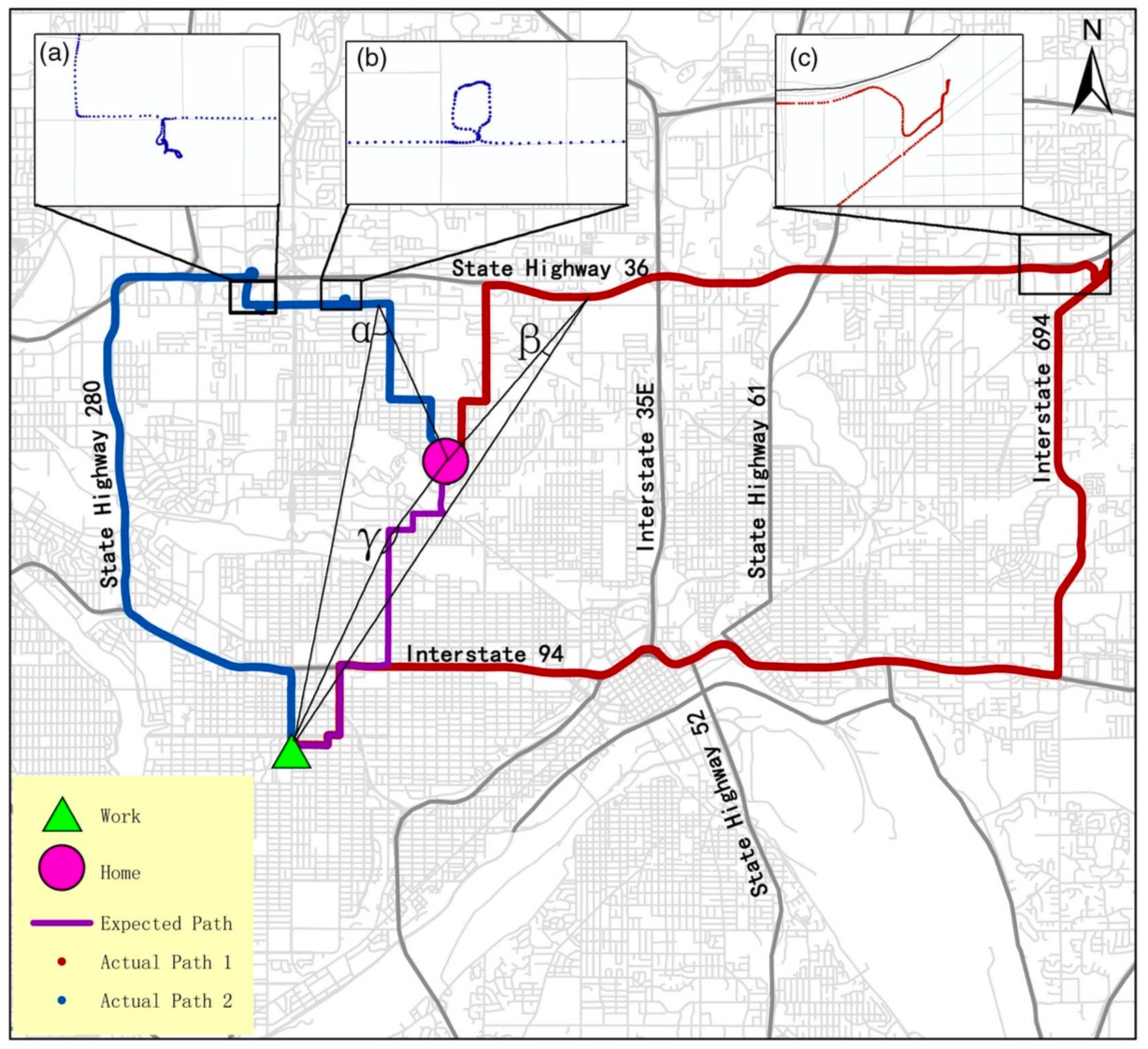An empirical study of the deviation between actual and shortest travel time paths
Recently published
Tang, W., and Levinson, D. (2018) An empirical study of the deviation between actual and shortest travel time paths. ASCE Journal of Transportation Engineering, Part A: Systems . 144 (8) [doi]
Abstract: This study evaluates routes followed by residents of the Minneapolis–St. Paul metropolitan area, as measured by the Global Positioning System (GPS) component of the 2010/11 Twin Cities Travel Behavior Inventory (TBI). It finds that most commuters used paths longer than the shortest path. This is in part a function of trip distance (+, longer distance trips deviate more), trip circuity (−, more circuitous trips deviate less), number of turns (+, trips with more turns per kilometer deviate more), age of driver (−, older drivers deviate less), employment status (+, part-time workers deviate more), flexibility in work hours (+, more flexibility deviate more), and household income (−, higher-income travelers deviate less). Some reasons for these findings are conjectured.
Author keywords: Global positioning system (GPS); Shortest path; Route choice; Wardrop’s principles; Travel behavior.


